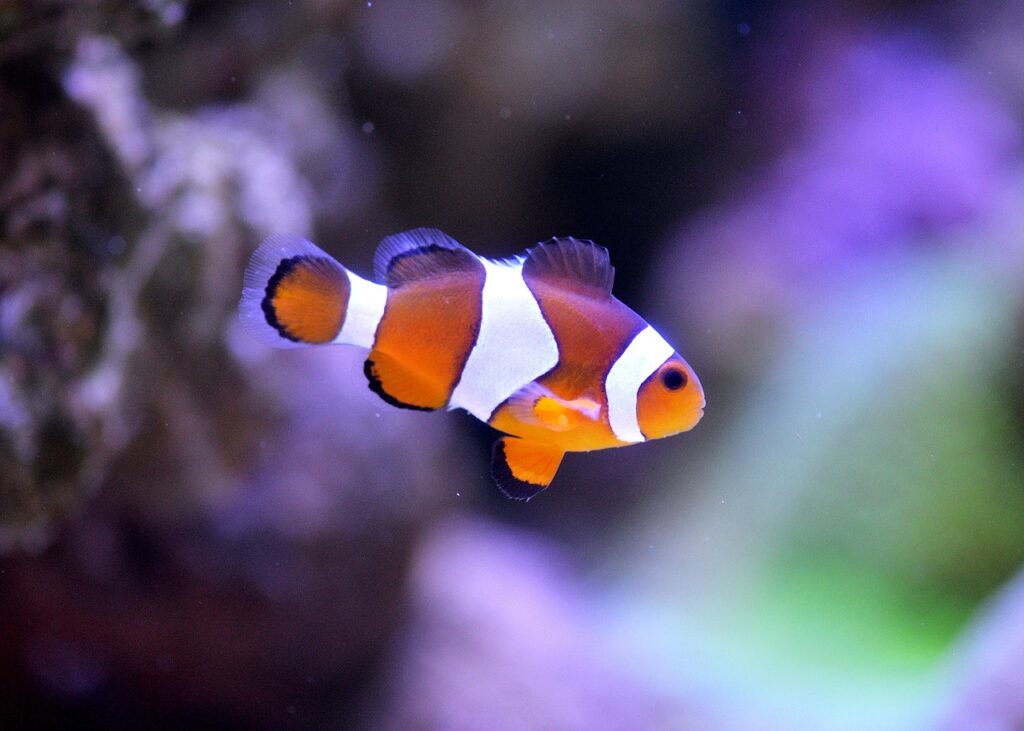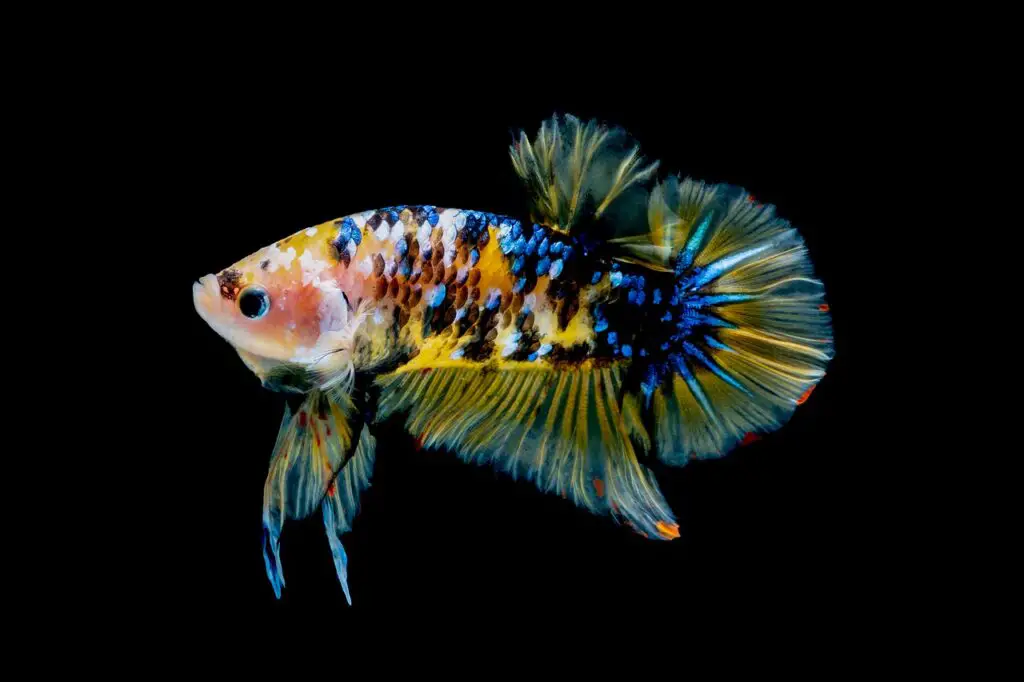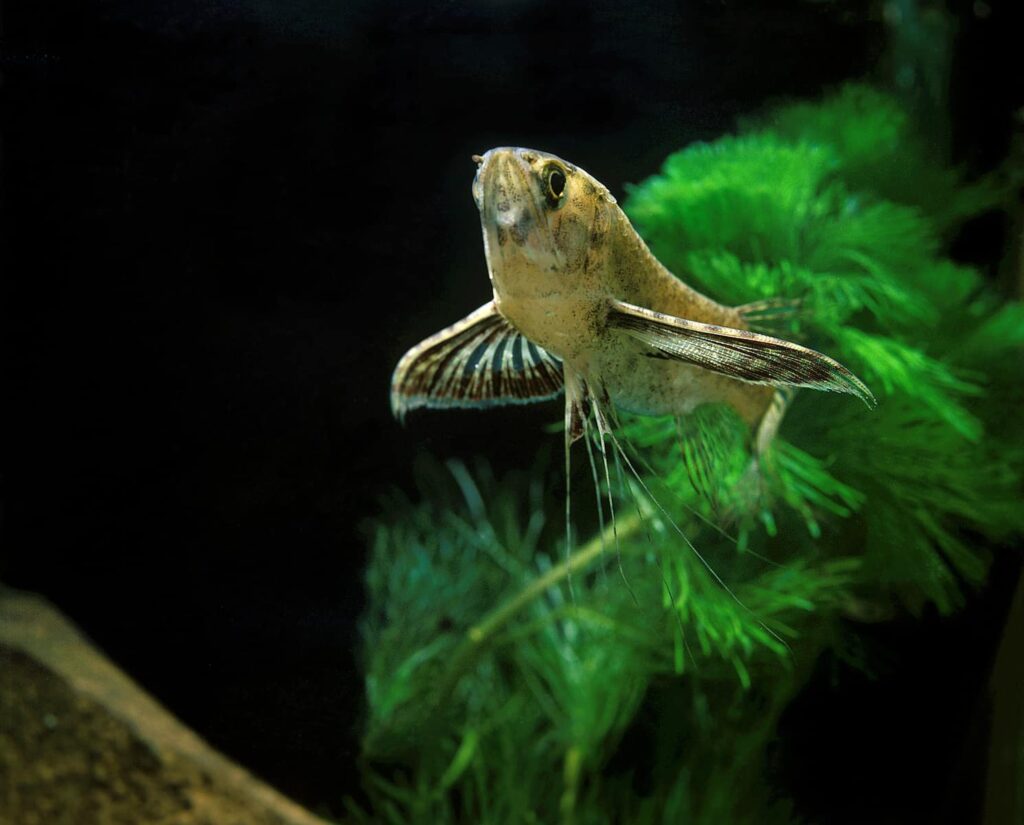Hugely popular thanks to the Disney Pixar movies Finding Nemo and Finding Dory, the common clownfish and the percula are some of the most striking saltwater fish you’ll find in the wild. They are really cool to watch swimming around in your home tank!

As with all saltwater fish, you are going to need to make sure you give your clownfish and/or percula precise care and attention. Let’s have a look at everything you need to know about common clownfish in general.
- Fish Lifespan: Up to 6 Years
- Tank Size: At Least 20 Gallons
- Water Temperature: Between 75 and 80F
- pH: Between 8.0 and 8.4
- Hardness: Between 1.020 and 1.024 sg
- Compatibility: Compatible with Cardinalfish, Angelfish and Damselfish
- Fish Size: Up to 4 Inches
How do you take care of the common clownfish and percula clownfish?
The clownfish is a fairly easy pet to look after. They have nice temperaments and largely won’t go looking for trouble, though like some other saltwater creatures, these fish can get territorial from time to time. However, compared to other saltwater beasts such as damsels, you will normally find that clownfish and perculas get on well with plenty of species.
However – be very careful when placing other clownfish species together! In fact, if you mix two different types of clownfish, you may find that they go from Jekyll to Hyde very quickly – they are intensive and defensive if they see another clownfish variant on their block. Better keep it to one species if you can.
The clownfish is generally going to need a lot of space with coral and rocks laid out across the tank. They can grow to be around four inches in length, though there are plenty of species out there which are smaller. The common clownfish really varies in this regard, too – meaning that it is always well and good to plan ahead with a large enough tank so you can welcome a clutch of clownfish if you want to.
Clownfish are omnivorous creatures, which means that you should ideally give them a balance in feeding between herbivore feed as well as meat. They love anemones and will normally choose to wallow in deeper waters with low currents. Therefore, it’s generally a good idea to keep a few anemones close by.
We’ll go into the clownfish and anemone relationship a little more a bit further down. Otherwise, you can expect a colourful, delightful pet from the common clownfish – meaning it’s well worth looking for them if you are just starting with your own saltwater aquarium.
What is the difference between Ocellaris clownfish and percula clownfish?
On the whole, there aren’t too many differences between the common clownfish and the percula. The main distinctions are that perculas are ‘true perculas’ – and that the Ocellaris or common variety may be a mutation or variation on what you’ll find in wilder waters.

Perculas tend to have extra spines than the common variety and may have different colourings. Beyond this, there are actually more and more mutations of the percula emerging, meaning that the Ocellaris is by no means alone.
On the whole, you should normally expect the same experience from a percula as you might from the common clownfish when setting up your own saltwater tank. However, it’s always a good idea to be careful when looking for the same fish to bring into the one tank, for reasons we’ll explore below!
Can Ocellaris and Percula clownfish live together?
Not necessarily – mixing different clownfish species together is not a very good idea. Clownfish tend to feel happiest when they live with their own species or variation.
Oddly enough, the clownfish feels threatened easily if a different species or variant enters their tank. Therefore, you will need to be very careful when it comes to adopting them for the first time. Mixing up clownfish species could lead to bullying, or even fighting.
Otherwise, clownfish of various species are generally really peaceful and easy-going. There are more than 30 different types of clownfish out there, however, so make sure you know which you are adopting before you set up your tank.
In particular, watch out for the maroon clownfish. This big, bristling variant of the species tends to be quite aggressive, and generally does well on its own as opposed to in any kind of community – other clownfish included. Don’t, under any circumstances, mix a maroon clownfish with a common or percula!
What kind of clownfish is Nemo?
Nemo and Marlin, from the Pixar movies, are Ocellaris clownfish, or common clownfish.
This is partly why there has been such a huge boom in common clownfish appearing in home saltwater tanks over the past 20 years!
It’s easy to tell that the animators based Nemo on this particular variety – they are just as brilliantly orange in real life – and are wonderful to watch swimming around.
What’s also interesting is that much like Nemo in the movie, clownfish aren’t fantastic swimmers – which goes to explain why Marlin was extra concerned for his son.
What is the life expectancy of a clownfish?
The common clownfish will normally live to be around six years old, maximum. However, there are plenty of reports to suggest that clownfish can live longer, meaning it’s not impossible to hold onto these critters for up to a decade.
However, clownfish can, of course, live shorter lives, too. It’s all dependent on the quality of care they receive. Providing your saltwater tank is the perfect pH, temperature and size, and you feed and care for your fish regularly, they can live long and healthy lives.

As with all other saltwater fish, clownfish are prone to stress, too, meaning you need to be extra careful with placing different species in the same tank. As mentioned, the common clownfish and the percula should normally adapt well to most other saltwater beasties, but it’s always a good idea to try and be conscious of the breeds you’re mixing in. For example, again – you could shorten the life of your clownfish if you mix the species or variants.
Six years is a good life for a clownfish or any saltwater beast – make sure you set up a tank that they can enjoy and thrive in.
How many clownfish can I put in a 10 gallon tank?
Not many – you may only be able to host a single clownfish in a 10 gallon tank. It’s less likely you will be able to house a clownfish in a tank this size if you have anemones, too.
The rule of thumb, overall, is that you should allow for around two gallons of water per one inch of fish. As clownfish of the common and percula varieties can grow up to around four inches long, this means a 10 gallon tank is going to be just enough space.
Generally, we would advise anyone keen to adopt several clownfish to look at tanks and aquariums of at least 20 to 30 gallons in size. This should also allow you to set up a small anemone or plant display, too. However, some experts even suggest that the best amount of space for a good layer of anemones will be around 50 gallons!
Therefore – some further advice – it’s perhaps a good idea to go as large as you can. Larger tanks are going to be more useful for helping you build saltwater communities in the long run, too. Clownfish and other species love plenty of space to swim around and hide, so naturally, the more volume, the better.
Do you need an anemone for clownfish?
You don’t necessarily need to set up anemones for your clownfish, but they tend to like sticking by them.

This is largely thanks to the fact that anemones can help to keep the current nice and slow in the bottom of the tank. Clownfish don’t tend to swim as well as other saltwater fish, which means they definitely prefer slower moving waters if they can find them.
Again, if you do want to set up anemones in your tank, make sure your aquarium is of a considerable size. Also, you will certainly want to set up your anemones before you bring your fish into the tank, and you will likely need to run the nitrogen cycle so it’s safe for all to swim around in and enjoy.
Overall, yes – we’d advise you look at setting up anemones for your clownfish for their best quality of life.
Should I get a clownfish?
Whether you are a beginner fish keeper or have a few years of tank maintenance under your belt, the clownfish is always a perfect specimen to consider. Beautiful, placid and a lot of fun to watch roaming around, these creatures are more than just pretty faces.
Therefore, providing you set up a big enough tank and have the right temperature and pH for them, there are no reasons why you can’t make your house a home for a common clownfish or percula. Bottom line – again – don’t mix the species!



